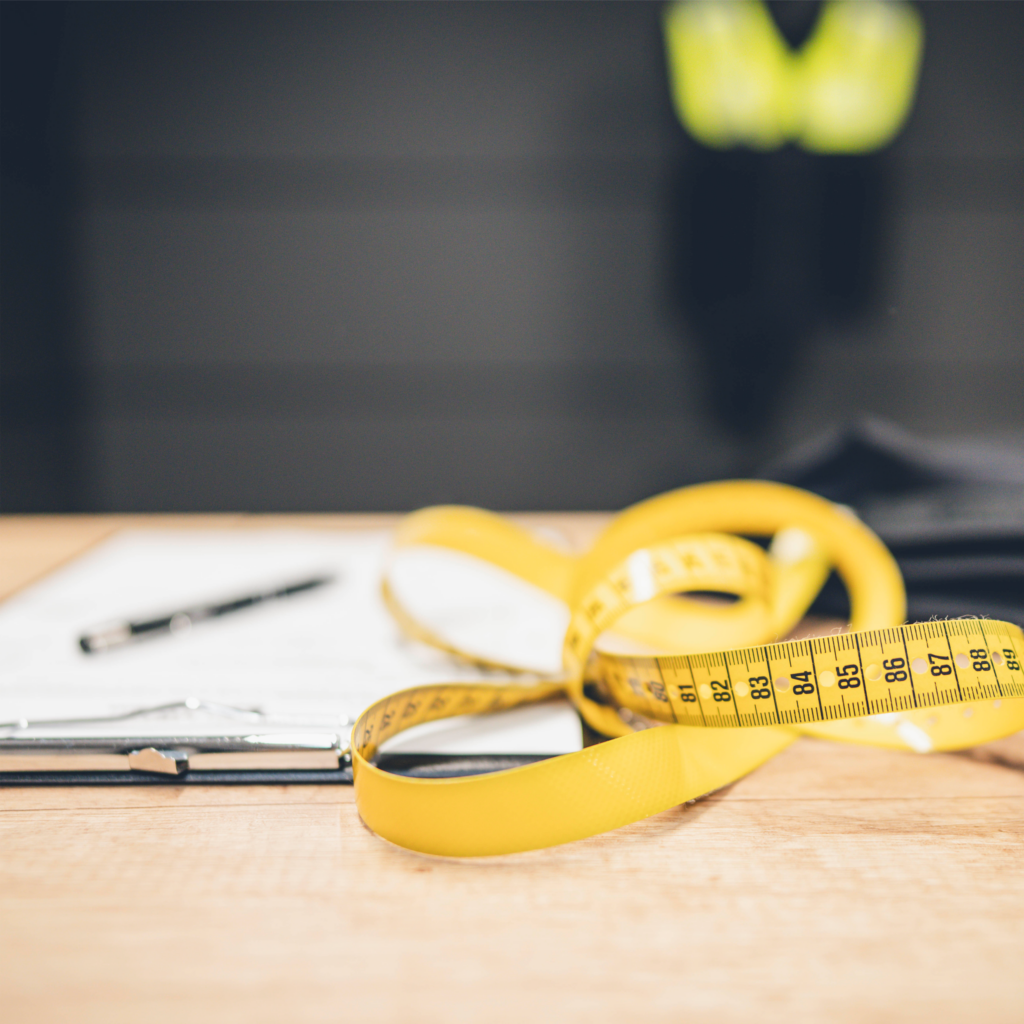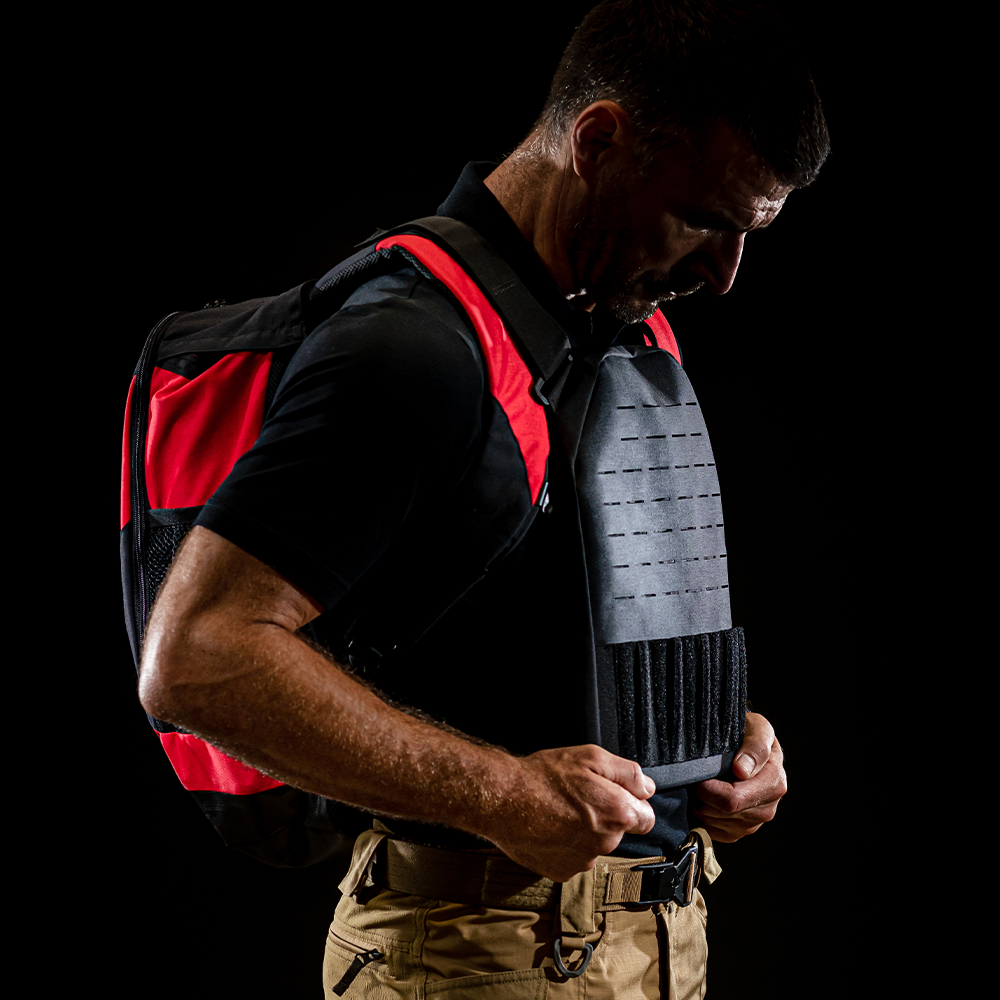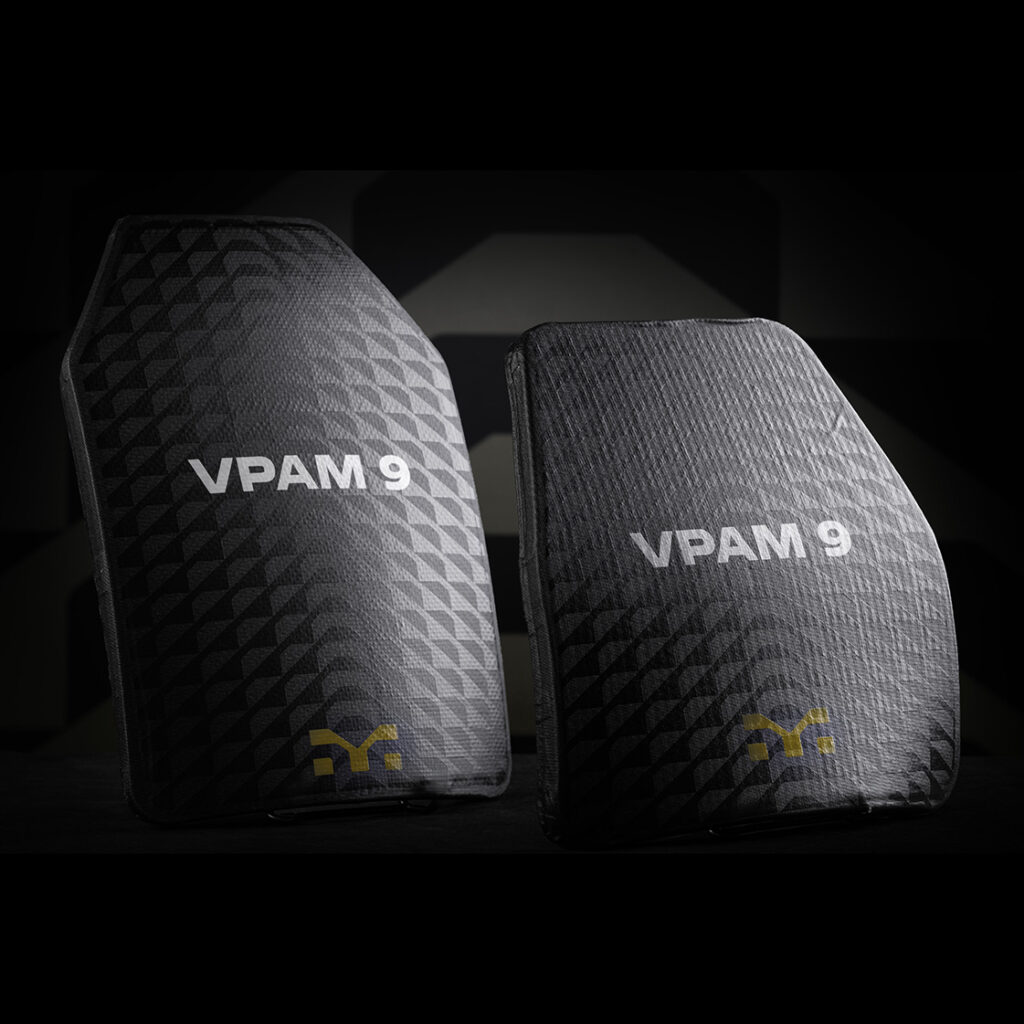
Plate carriers – practical guide
It is hard to imagine everyday military and police life without plate carriers. They are an absolutely essential piece of equipment for helping ensure that wearers return home safely at the end of the mission. Even though the level of protection offered by plate carriers can be increased or decreased to suit mission requirements, only the most foolhardy would gear up for action without first putting one on.
In this article, we’ll attempt to dispel some of the confusion surrounding plate carriers—for example, not everyone agrees on what plate carriers are and to what extent they differ from chest rigs. We’ll also present tips to help you correctly position a plate carrier on your body for optimal performance and to help you give this vital tactical accessory the best possible care (so that you can count on it protecting you for a long time to come).
What is a plate carrier?
A plate carrier is an important piece of tactical protective equipment. It is designed to protect vital organs (heart, lungs, liver, arteries, and more) from life-threatening trauma (mainly, bullet and knife wounds).
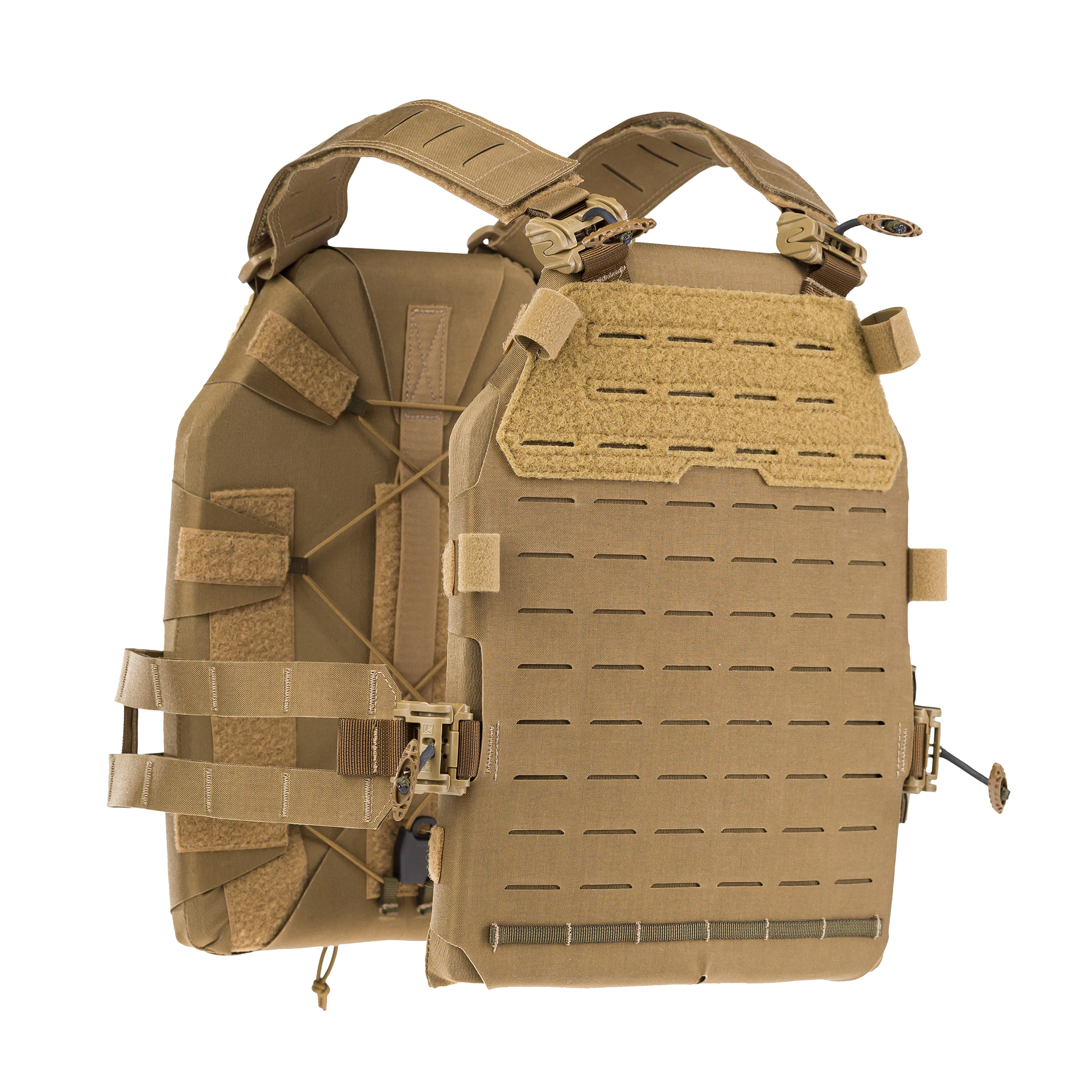
Conventionally, a plate carrier consists of two parts: an armoured plate and a textile cover into which the plate is inserted. Typically, the plate will be either a hard-ballistic stand-alone type or of the ICW (In-Conjunction-With)—both are available in different protection classes such as NIJ, VPAM, and CAST. The cover by itself provides no protection; for that the plate must be added. The cover also serves as a point of attachment for other tactical equipment.
In its basic form, a plate carrier consists of two covers connected by straps and fasteners. The straps rest atop the wearer’s shoulders, allowing one cover to shroud the chest and the other the back. The fasteners permit the two covers to be securely connected at each side of the wearer’s upper torso so they don’t flop to and for as the wearer ambulates or engages in other motions. However, when the plates are inserted, protection is afforded to the wearer in the front and back only, not at the sides, which are exposed.

This can be overcome with the addition of plates attached to the sides (plates can also be added in other areas of vulnerability, such as the larynx, upper arms, abdomen, lower body, and thighs.
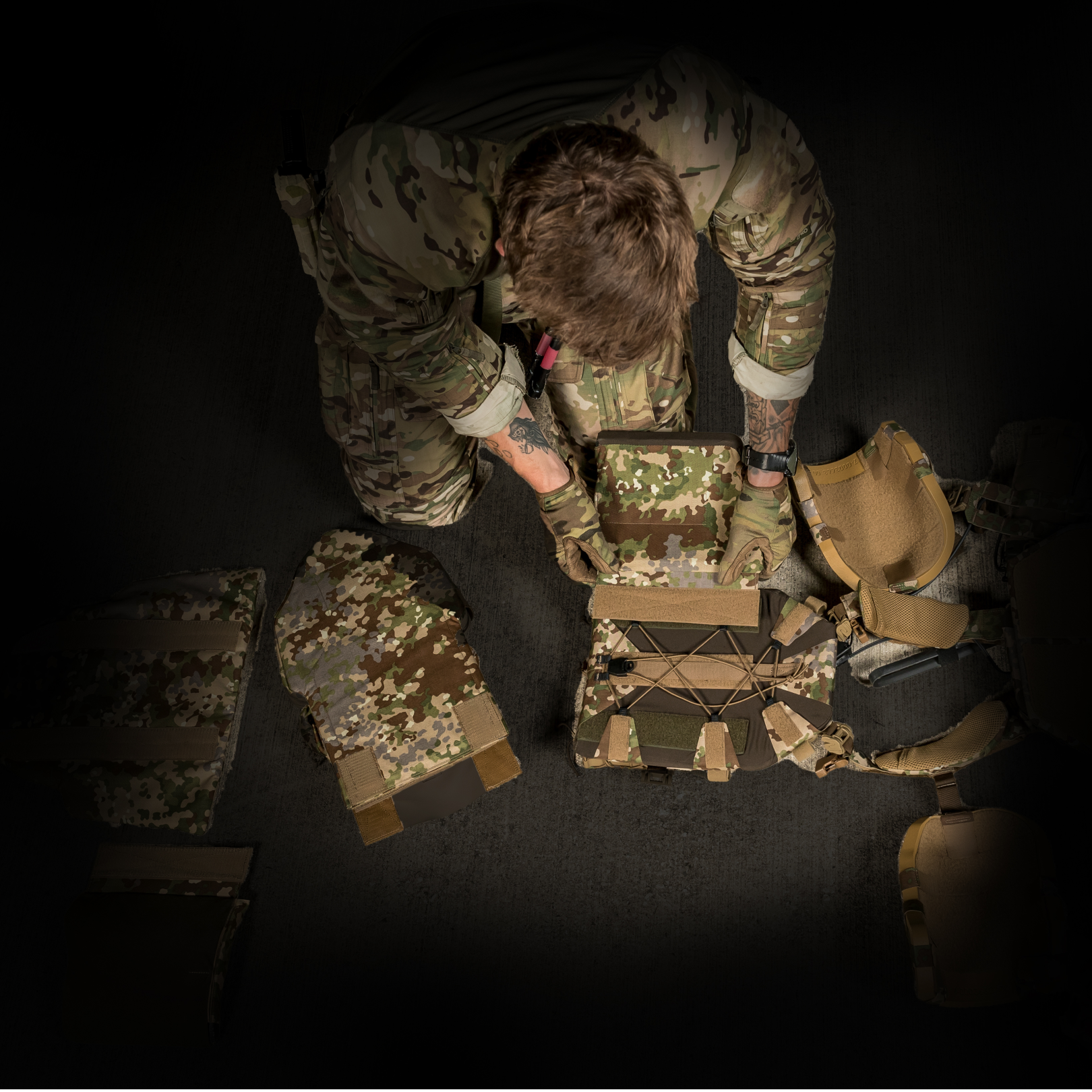
Plate carriers are available in different designs, shapes, and sizes, and can be configured to meet the wearer’s mission-specific needs. The primary users of plate carriers are military personnel and law-enforcement agencies—the plate carriers used by each differs in accordance with the operational objective and threat situation encountered therein. Plate carrier weight can vary considerably from one setup to the next depending on the base unit being employed, the extra gear attached to it, and the type of operation undertaken.
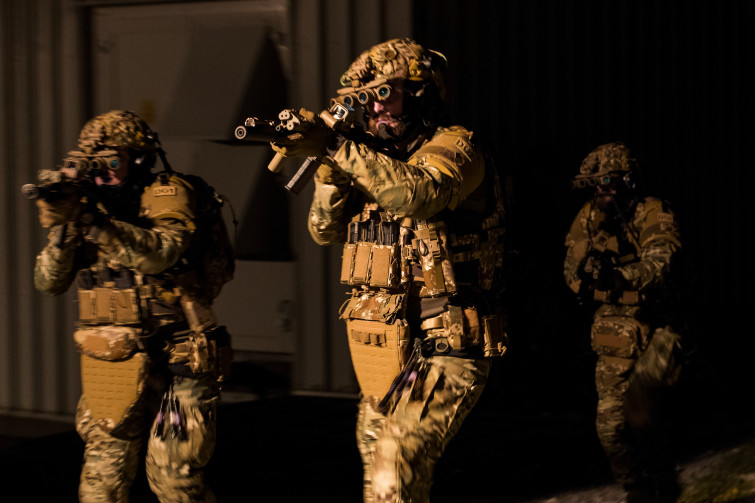
Plate carriers are often confused with overt vests. The confusion is understandable: in some regards the two are similar although there are important differences in certain criteria. Read our handy guide to ballistic vests to find out about these similarities and differences.
How to equip a plate carrier
A decisive advantage of plate carriers is their modularity—it’s significantly more than that of protective vests. For example, with a plate carrier, removable pouches can be attached to the sides (cummerbund) and to the front and back using MOLLE loops or clips as warranted by the operational situation (amongst the attachment options are magazine pouches, radio pouches, multipurpose pouches, quick-draw pouches, grenade pouches, first-aid pouches, and tool pouches). Oftentimes, there will be a rear zipper to permit additional bags, (hydration) backpacks, and/or heavy loads (breaching tools, for example) to be attached to the back.
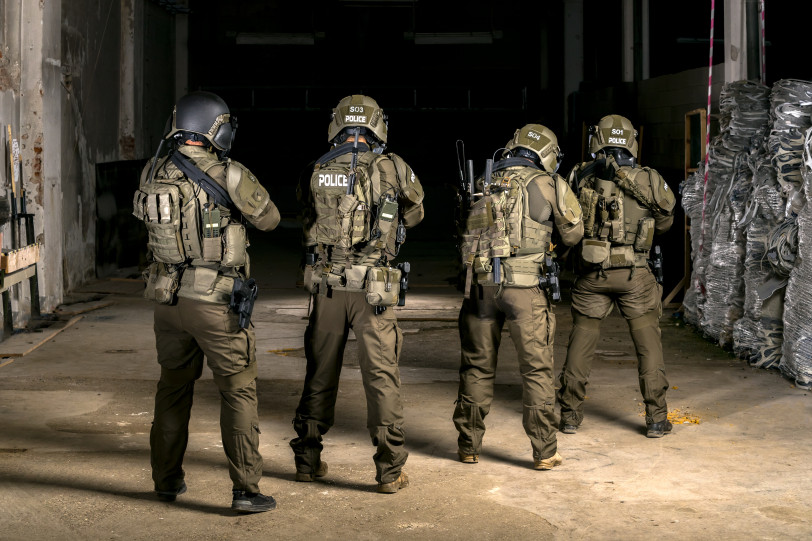
Plate carriers can be outfitted with quick-release mechanisms so the gear can be ditched in a hurry in case of an emergency. Alternatively, the shoulder straps and cummerbund can be used to achieve that same result.
The assembled plate carrier should be tested before use to ensure that all of the attached equipment is correctly positioned and within easy reach. Testing is also valuable as a means of gaining familiarity with the attached equipment and of confirming that the wearer will have adequate freedom of movement.
How to position a plate carrier
The way you carry a plate carrier is crucial, as carrying it incorrectly can lead to a reduction in protective performance.
If, for example, the front plate is centred over the abdomen, it will be too low to protect the upper chest. Accordingly, as a rule of thumb, the front plate should be positioned between the belly button and the indentation at the top of the sternum, while the upper section of the back plate should be positioned halfway up the shoulder blades to the point where it is level with the front plate.
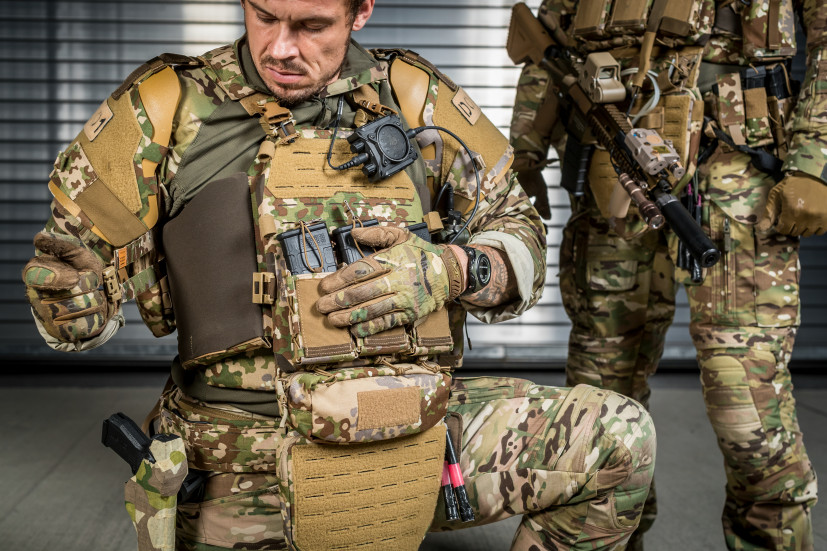
Correct positioning of side plates is no less important. In order to close a gap in frontal protection, they should be placed as close and as high as possible to the front panel.
Straps straddling the shoulders should lay across the balancing point midway between front and back. These straps—used by themselves with a looping technique or in conjunction with the cummerbund—can be employed to adjust the fit of the plate carrier.
Proper matching of plate size to the size of the carrier can prevent plate slippage. To achieve optimal fit, wearers are advised to correctly position the shoulder straps and the side fasteners.
Chest rig vs. plate carrier - What`s the difference?
The terms “plate carrier” and “chest rig” are not infrequently used interchangeably, which is incorrect but understandable since the two types of gear have fundamentally similar functionalities. Yet they are different and in an important way. A plate carrier is a kind of platform for the carrying of ballistic plates as well as various accessories (magazines, radios, and the like), while a chest rig is a separately portable piece of equipment for attaching various gear elements and that can hang over a covert or overt vest as needed.
Adjustable using shoulder straps and side fasteners, chest rigs are MOLLE-based or else feature permanently sewn-on pouches. As a rule, chest rigs are used for optimising equipment accessibility and weight distribution.
Rarely are chest rigs outfitted with hard- and/or soft-ballistic plates, as are plate carriers (which is why chest rigs are often worn in combination with a plate carrier or a protective vest). Equipment routinely attached to a chest rig include trauma kits, magazines, knives, hydration bladders, and radios.
How to care for and maintain a plate carrier
Well-maintained equipment lasts longer and protects better. For this reason, the following points should be considered when caring for and maintaining plate carriers:
- Remove all plates and accessories before cleaning
- Never machine wash a plate carrier; always wash by hand
- Do not clean with bleach, chemicals, or (wire) brushes; to avoid damaging the plate carrier’s surfaces, use only water and mild detergent
- After washing, remove excess water with a towel or cloth, then allow the plate carrier to air dry
- Check the plate carrier after each use for signs of wear or other damage
- Store the plate carrier in a cool, dry place away from sunlight
- Be mindful of rough or jagged surfaces, as contact with these can result in scratches and other more serious forms of damage to plate carrier surfaces
Summary
A plate carrier is a vital—and versatile—piece of equipment for military and law-enforcement personnel. Plate carriers come in many styles, sizes, and shapes. In it’s most basic configuration, a plate carrier consists of two covers—one for the wearer’s front, the other for the back—that are connected by means of shoulder straps and side fasteners, and is expandable to become a platform for securing needed accessory gear and keeping it all handy. The protective performance of a plate carrier depends on the way in which it’s carried and on how well it’s maintained (thus, the general care instructions provided by the manufacturer should always be followed).
